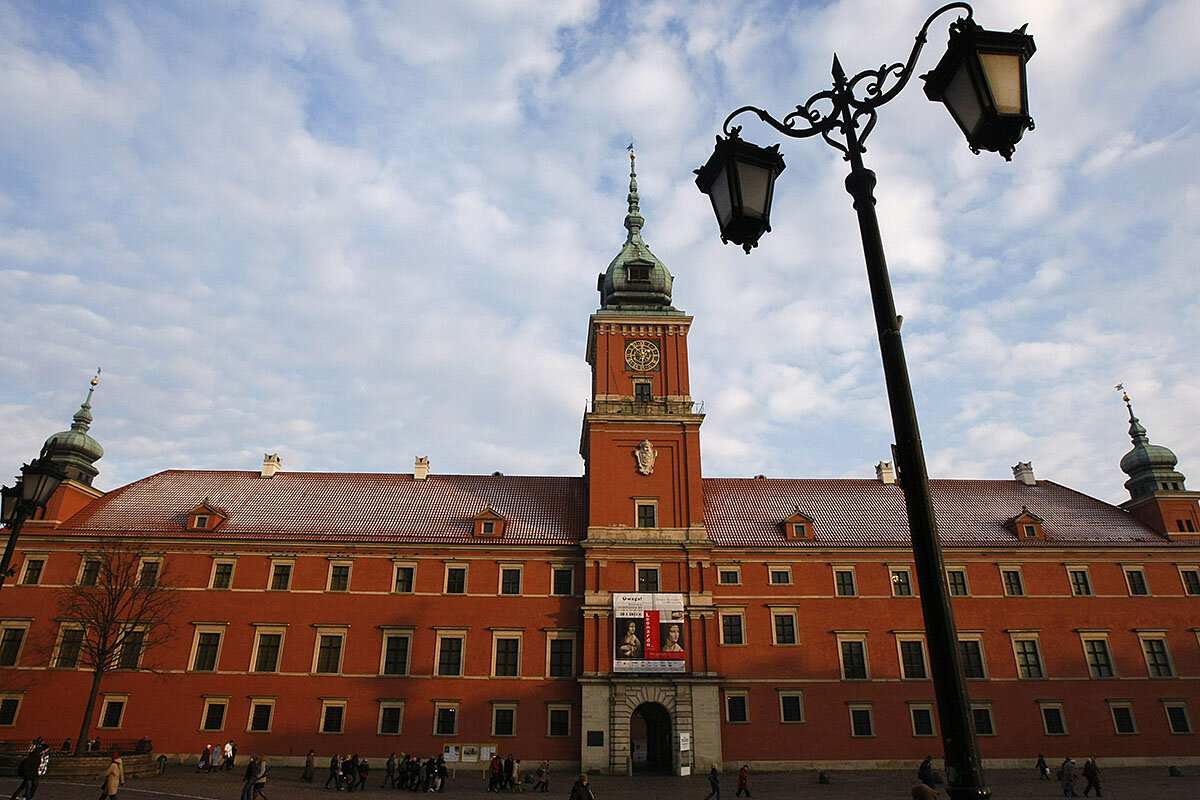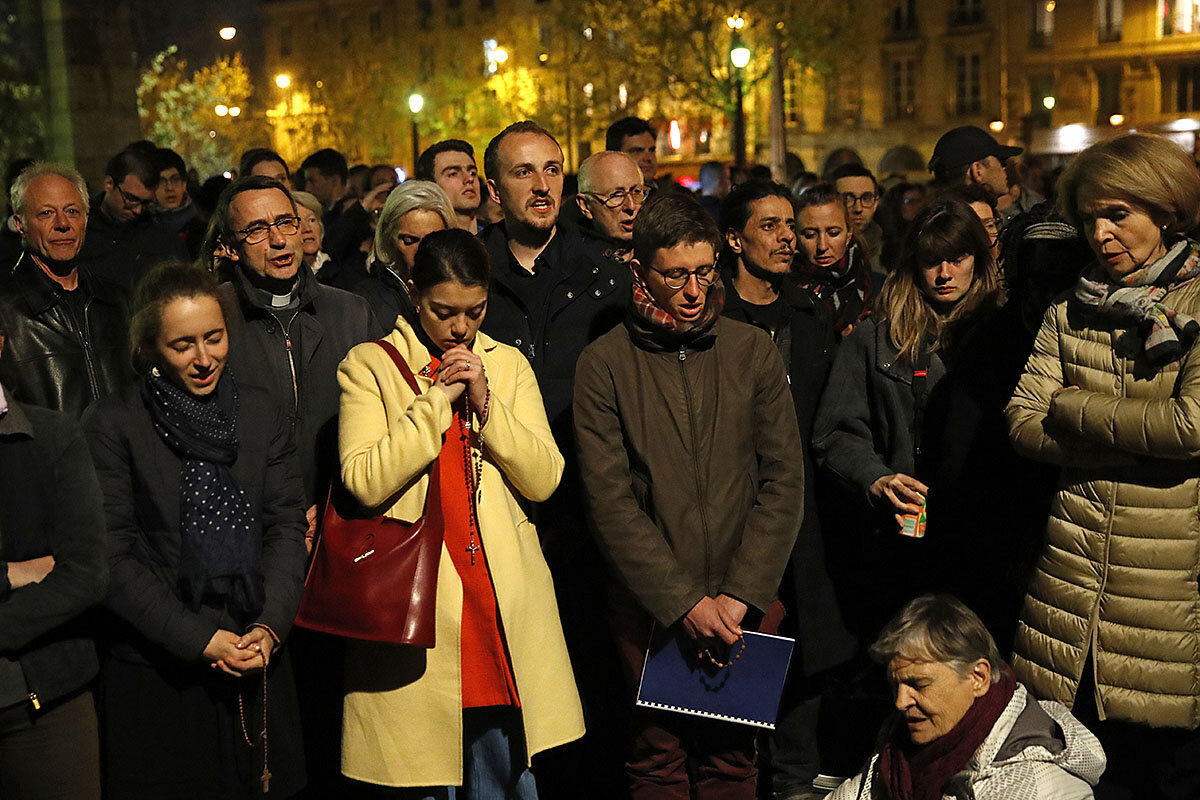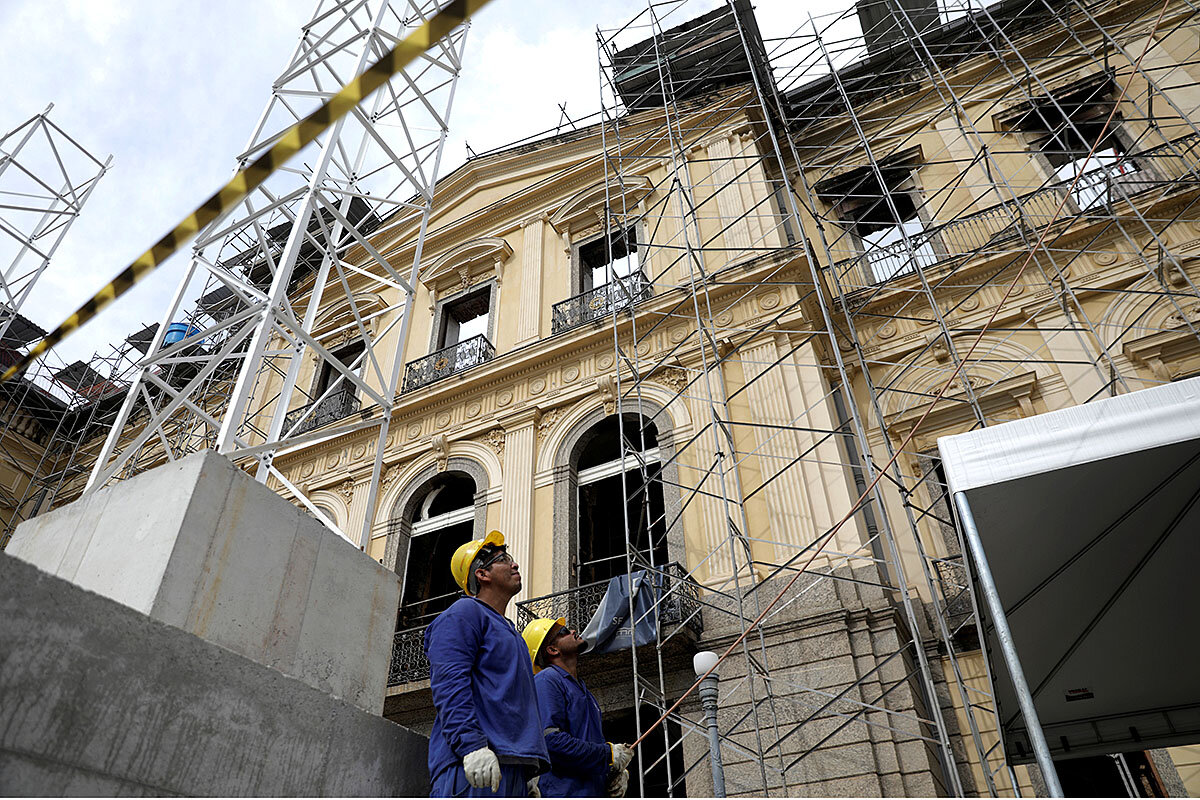Paris can learn others’ lessons in loss after Notre Dame fire
Loading...
| Paris; New York; Warsaw, Poland; and Rio de Janeiro
The fire that ravaged Notre Dame in Paris on Monday night has shocked France. The flames came close to destroying the cathedral, and they gave the country pause for thought at a time when it has been torn by angry social protests. President Emmanuel Macron appealed to citizens’ sense of their common history as he pledged to rebuild the damaged church.
Paris is not the only city to have suffered in this fashion. Others have suddenly lost cultural icons in a variety of ways – New York saw terrorists bring down the Twin Towers and kill thousands in 2001, Adolf Hitler blew up Warsaw’s royal palace, and a conflagration destroyed Brazil’s National Museum last year.
How well these cities and communities have coped with their losses, and tried to overcome them, seems to depend heavily on how deeply they can draw on what holds them together, and turn their backs on what sets them apart. Paris appears to be on the right track. “This has prompted a coming together, a sense of solidarity,” said one Parisian as he snapped a photo of Notre Dame.
Why We Wrote This
The Notre Dame fire represents a major cultural loss for Paris. But communities around the world, from Warsaw to New York, offer evidence that recovery is possible.
As dawn broke over Notre Dame on Tuesday, small fires still smoldered. Its ancient timber-framed roof and spire had gone up in smoke. But the cathedral stood firm, an imposing, massive presence that Monday’s blaze disfigured but did not destroy.
Parisians were in shock. The spectacular flames had come close to destroying one of their city’s most precious icons and it will take years to restore the building. But the near-catastrophe has reminded a city shaken in recent months by violent social protests of what its citizens have in common: their history.
“I’ve noticed that this has prompted a coming together, a sense of solidarity,” says Alain Meunier, who had stopped on his way to work to take a smartphone picture of Notre Dame. “There is a strong collective emotion.”
Why We Wrote This
The Notre Dame fire represents a major cultural loss for Paris. But communities around the world, from Warsaw to New York, offer evidence that recovery is possible.
Other cities around the world, from Rio de Janeiro to New York to Warsaw, have lost symbolic cultural buildings over the years. How successful they have been in overcoming those losses seems to depend largely on how deeply they have been able to draw on what their residents have in common.
French President Emmanuel Macron appealed to that sort of shared heritage on Monday evening, speaking in front of Notre Dame as it burned. “We were able to build this cathedral, and to enlarge and improve it over the centuries,” he said. “And we will rebuild this cathedral, all together; it is certainly part of French destiny.”
Mr. Macron’s announcement of an international donation drive to fund the cathedral’s restoration met with quick success. Three of France’s richest people, Bernard Arnault who owns LVMH, rival luxury goods magnate François Pinault, and L’Oreal owner Françoise Bettencourt Meyers have pledged 500 million euros between them and the Paris city government promised 100 million more.
A bigger and better castle
The authorities in Warsaw relied on similar patronage in the 1970s when they set about rebuilding the ancient Royal Castle, which had been “a symbol of Poland’s independence and sovereignty” and a powerful element of Poles’ national identity, according to the castle’s curator, Bozena Radzio.
That, she says, explains why Adolf Hitler ordered that the fortress should be blown up during the Warsaw Uprising in 1944, along with the city’s Old Town that had already been badly damaged in fighting.
After World War II, Poland’s new Communist rulers also found the castle too symbolic to want to restore it; its associations with royalty and with a parliament that had drawn up Europe’s first liberal Constitution in 1791 were too strong.
They did, however, rebuild the old city in the 1950s, in approximate fashion: They based their plans partly on paintings by the 18th-century Italian artist Canaletto the Younger that had been saved from the castle before its destruction. But the reconstruction of a part of the city that had been almost completely obliterated during the war was very popular among Poles who saw it as new evidence of their survival skills.
Only in the 1970s, when the government sought ways of appeasing popular unrest, did the authorities begin to reconstruct the castle in a project 90% funded by private donations from around the world.
Again, the architects used a fairly free hand. “Neither the castle … nor the Old Town were rebuilt exactly as they looked before the war,” says Jaroslaw Trybus, former deputy director of the Museum of Warsaw. “The castle before the war seemed quite low and it had bad proportions. It is bigger today and workers used better construction materials.”
Authentic or not, the building “has grown so strongly into the cityscape that it is difficult to imagine the place without it, says Ms. Radzio. “Many young people do not even know that it was destroyed during the war.”
‘We all worked together’
That is scarcely the case in lower Manhattan in New York, where the iconic World Trade Center towers collapsed on Sept. 11, 2001, killing thousands, after Al Qaeda terrorists crashed passenger planes into them.
But New Yorkers discovered – if only briefly – an unusual unity in the wake of that disaster, setting aside their normal differences.
“We all worked together, we refocused. It felt like we came together as city dwellers, thinking of ourselves as being on the same team, on the same side,” says Edy Nathan, a therapist in New York who was just beginning to work with trauma victims at the time.
“We were one, and it actually felt sadly amazing,” she adds. “What could we be if we all worked together regardless of our differences?”
But such emotional experiences soon evaporated under the pressure of colossal turf fights and clashing opinions about how the Twin Towers site should be rebuilt.
The governor of New York at the time, George Pataki, set up a panel to adjudicate between the competing interests jockeying for influence in one of the densest cultural and economic centers in the United States – and to distribute nearly $10 billion in federal funds.
These experts ran a global competition for architects and urban planners to submit innovative ideas for both new buildings and new urban spaces on the site.
These plans thrilled Tom Stoelker, who remembers the visceral reactions he felt when he was in lower Manhattan that September day, witnessing the burning towers and their collapse. “I immediately thought, ‘Will they rebuild it?’” he says, and was “so inspired” by the prospect of excitingly new buildings that he went back to school and later became a journalist covering architecture around the world.
“Yesterday, I thought the same about rebuilding [Notre Dame], and what could be saved,” Mr. Stoelker says.
In the end, the Port Authority of New York and New Jersey and the private billionaire developer Larry Silverstein overruled an innovative plan to rebuild the site and chose a more traditional, and often very controversial, approach.
“Paris might have an easier time of it … because they’re going to be looking at a restoration,” says Mr. Stoelker. “At Notre Dame, they’re going to be working with something that exists, and in an area steeped in history.”
A long way to go in Rio?
The National Museum of Brazil was steeped in history too. It was Latin America’s largest museum and its biggest repository of archives. But it has not existed since a massive fire destroyed it and most of its contents last September.
The museum was housed in a former royal palace amidst an extraordinary park, but it was a largely forgotten and poorly maintained institution. It could hardly be further from the high finance and high politics of Manhattan, or less like the global cultural icon that is Notre Dame.
Few Brazilians, save a small group of academic anthropologists and natural science researchers who made the museum their home, appreciated the value of its collection and archives. Sitting in a working class district of Rio it attracted few wealthy visitors, though it was often the first museum that children from poorer areas visited.
Underfunded and underappreciated, the National Museum went up in flames shortly before fiercely fought and deeply divisive presidential elections that Jair Bolsonaro won. Brazil had no time to digest its loss before the country was consumed by angry political battles that deepened social divisions and left little space for a common approach to the museum’s possible rebirth.
“We have thousands of problems,” says Antonio Carlos de Souza Lima, a professor of ethnology at the museum. “The fire was another tragedy of the numerous tragedies that we are suffering through now, and I don’t believe that Cariocas [Rio residents] have got over it.”
“So few people knew about the National Museum,” laments Thaddeus Gregory Blanchette, who earned his Ph.D there. “We still don’t know if we will be able to rebuild everything and the world has moved on.”
Dr. Blanchette can only dream of the sort of pledge President Macron made to France on Monday evening, that “we will rebuild Notre Dame because the French expect it, because our history deserves it, and because it is our profound destiny.”
“In 40 years from now, the average person will be able to go into Notre Dame and not be able to tell there had been a fire,” says Dr. Blanchette. “Forty years from now, there is a good chance the National Museum will still be in ruins.”
• Monika Rebala in Warsaw, Poland; Harry Bruinius in New York; and Kiratiana Freelon in Rio de Janeiro contributed reporting to this article.










